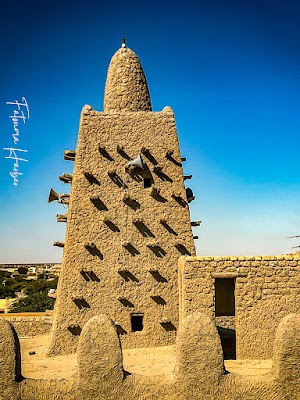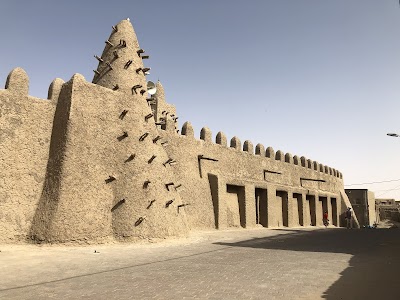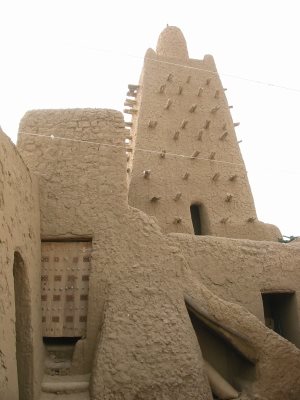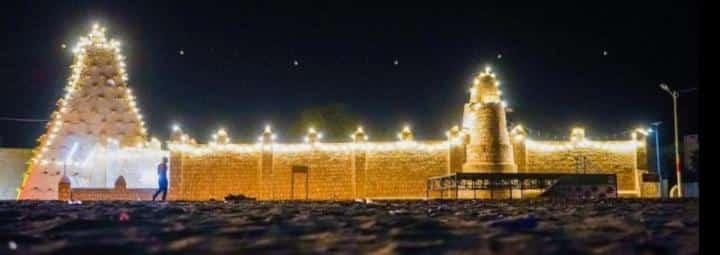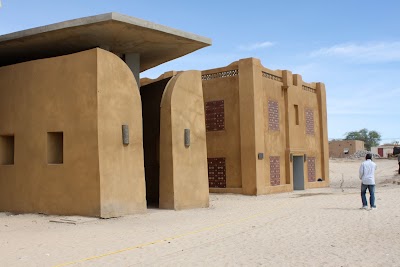Djinguereber Mosque (مسجد جنقريبر)
Overview
The **Djinguereber Mosque** is a historic marvel nestled in the ancient city of Timbuktu, located in the Tombouctou Region of Mali. This architectural gem stands as a testament to the region's rich cultural and historical heritage. Renowned for its unique Sudano-Sahelian architecture, the mosque has played a significant role in the propagation of Islam and the pursuit of knowledge throughout West Africa. For visitors eager to explore a piece of living history, Djinguereber Mosque offers an unparalleled glimpse into a bygone era.
Commissioned by **Mansa Musa**, the wealthy Emperor of the Mali Empire, this magnificent structure was completed in 1327. Mansa Musa's extravagant pilgrimage to Mecca is well-documented, and upon his return, he enlisted the expertise of Andalusian architect **Abu Ishaq al-Sahili**, who is credited with the mosque's design. For over six centuries, Djinguereber Mosque has served as a central place of worship and learning, underscoring its enduring importance in the region.
The mosque is constructed primarily from **organic materials** such as mud, straw, and wood, which contribute to its distinctive earthy tones and remarkable resilience. One of its most striking features is the towering minaret made of mudbrick, which has withstood the test of time and remains an iconic symbol of Timbuktu. The thick, tapering walls and strategically placed wooden beams that jut out from the facade are not only aesthetically pleasing but also serve practical purposes, acting as scaffolding for annual repairs using banco—the traditional mud plaster.
Venturing inside, you'll discover a labyrinthine complex of **prayer halls and courtyards**. The interiors remain cool and inviting due to the thick walls and small windows that regulate sunlight. The mosque accommodates up to 2,000 worshippers, and its spacious prayer hall, adorned with intricately designed niches and arches, exudes an aura of serenity and reverence. Notably, Djinguereber has been a significant center of learning, with historical records indicating that it housed one of Africa's earliest universities, where subjects ranging from theology to astronomy and mathematics were taught.
Over the years, Djinguereber Mosque has faced several challenges, including **climatic factors and political instability**. Despite these adversities, the mosque has undergone various restorations, most recently under the supervision of UNESCO, which has listed it as part of the World Heritage Site known as the **Timbuktu Manuscripts**. These restoration efforts ensure that Djinguereber Mosque continues to be a beacon of cultural and historical legacy for future generations.
For tourists, a visit to Djinguereber Mosque is more than simply admiring its architectural grandeur; it’s an opportunity to immerse oneself in the rich stories and histories encapsulated within its walls. Guided tours are available, offering insights into its construction, the various empires that have influenced its development, and the scholars who have walked its halls. It's fascinating to learn how the mosque served not only as a place of worship but also as a hub of intellectual activity during Timbuktu's golden age.
When visiting, it’s important to **respect local customs and practices**, as Djinguereber remains an active place of worship. Modest attire is encouraged, and it’s advisable to check for any restrictions on photography or areas that may be off-limits to non-Muslims. With considerate engagement, visitors can ensure a more fulfilling and respectful experience.
Beyond its architectural and historical significance, the mosque serves as a **symbol of cultural resilience** and continuity. Despite the many adversities faced by Timbuktu, from invasions to environmental changes, Djinguereber Mosque stands resilient, much like the spirit of the Malian people.
In conclusion, a visit to Djinguereber Mosque offers more than just a visual feast; it provides a rich tapestry of **history, culture, and spirituality**. Whether you are an architecture enthusiast, a history buff, or simply a curious traveler, this iconic mosque promises a deeply enriching experience. As you stroll through its corridors and courtyards, you’ll be walking through centuries of history, absorbing the wisdom and beauty of a culture that has significantly contributed to the world’s heritage.


